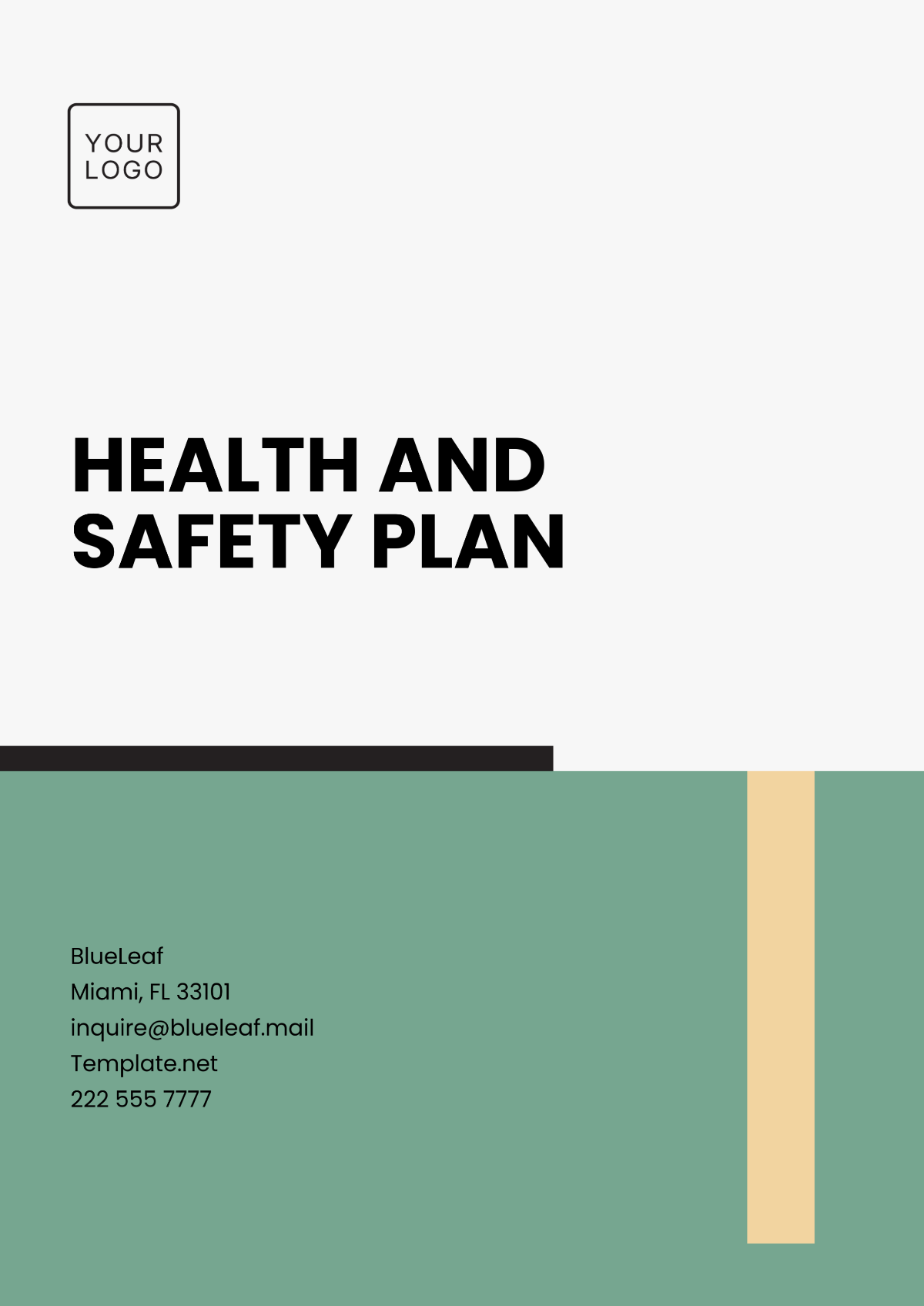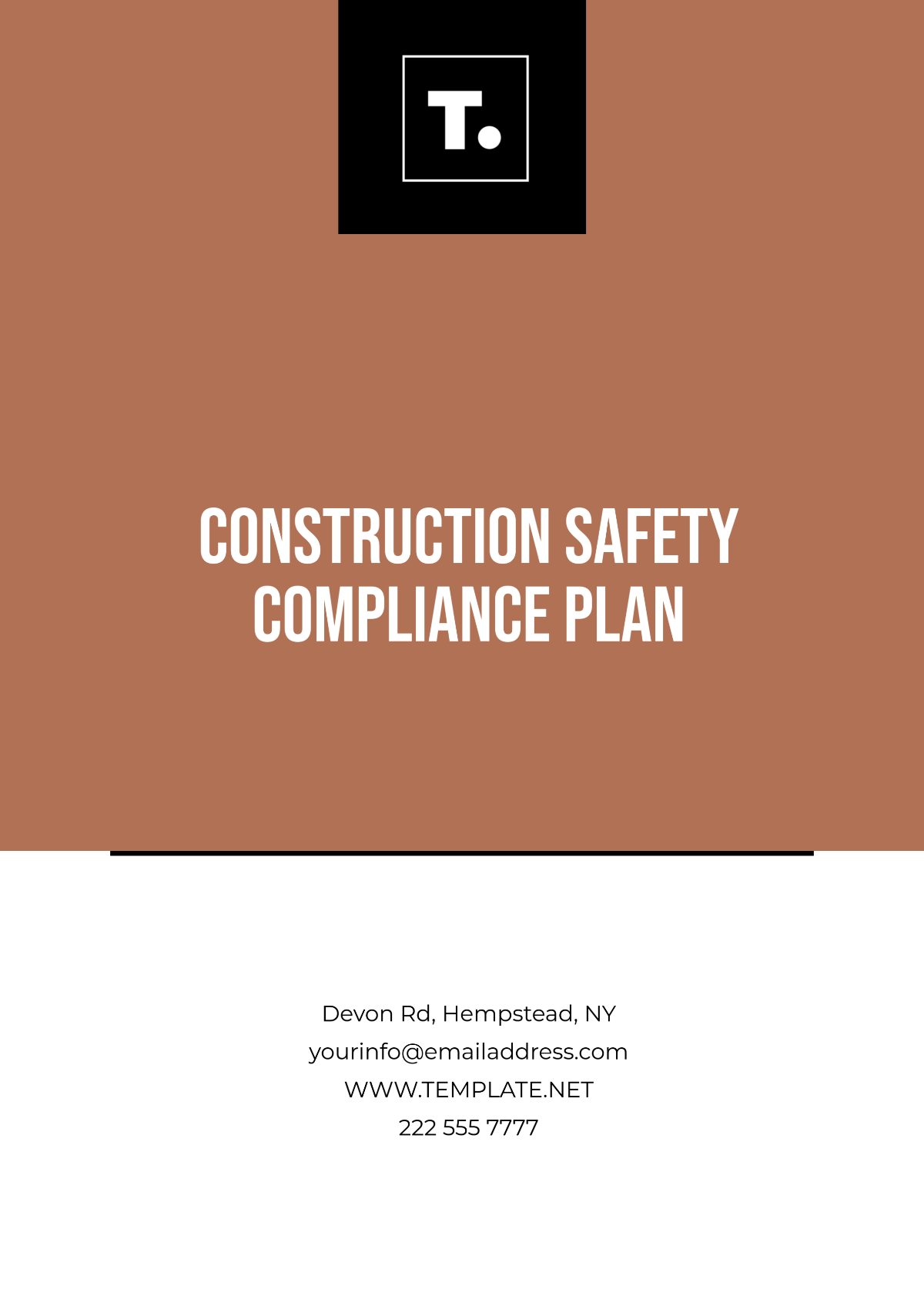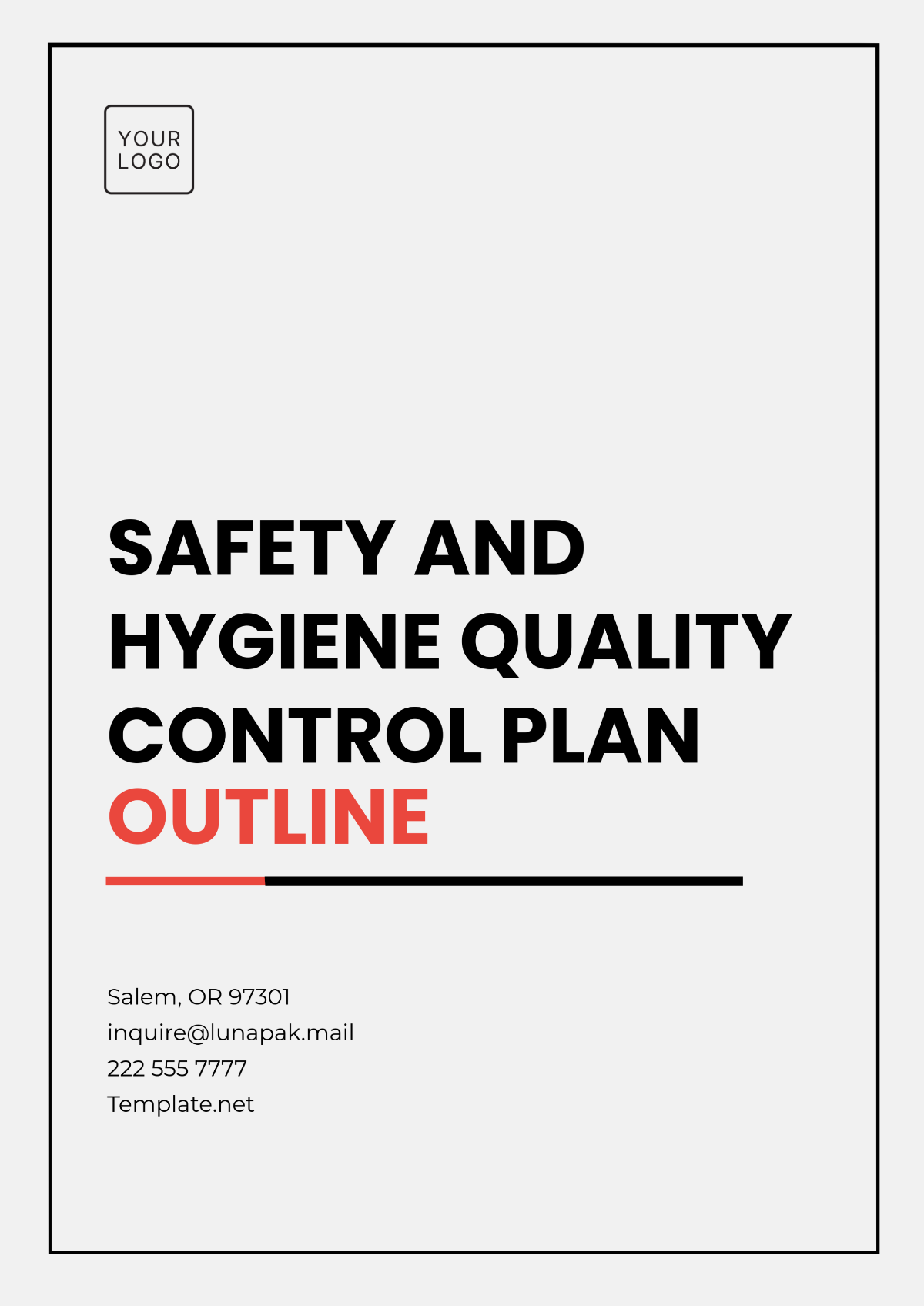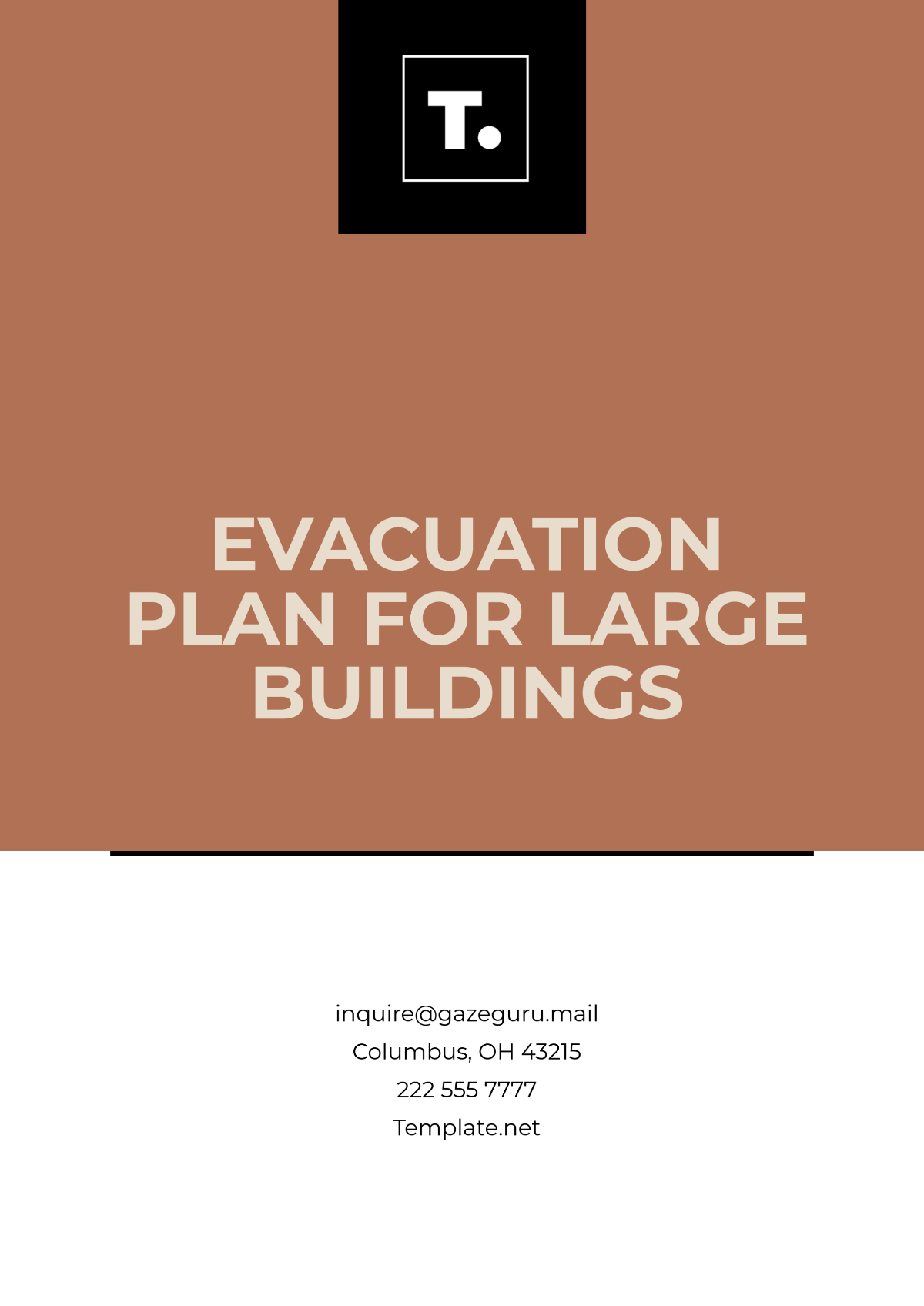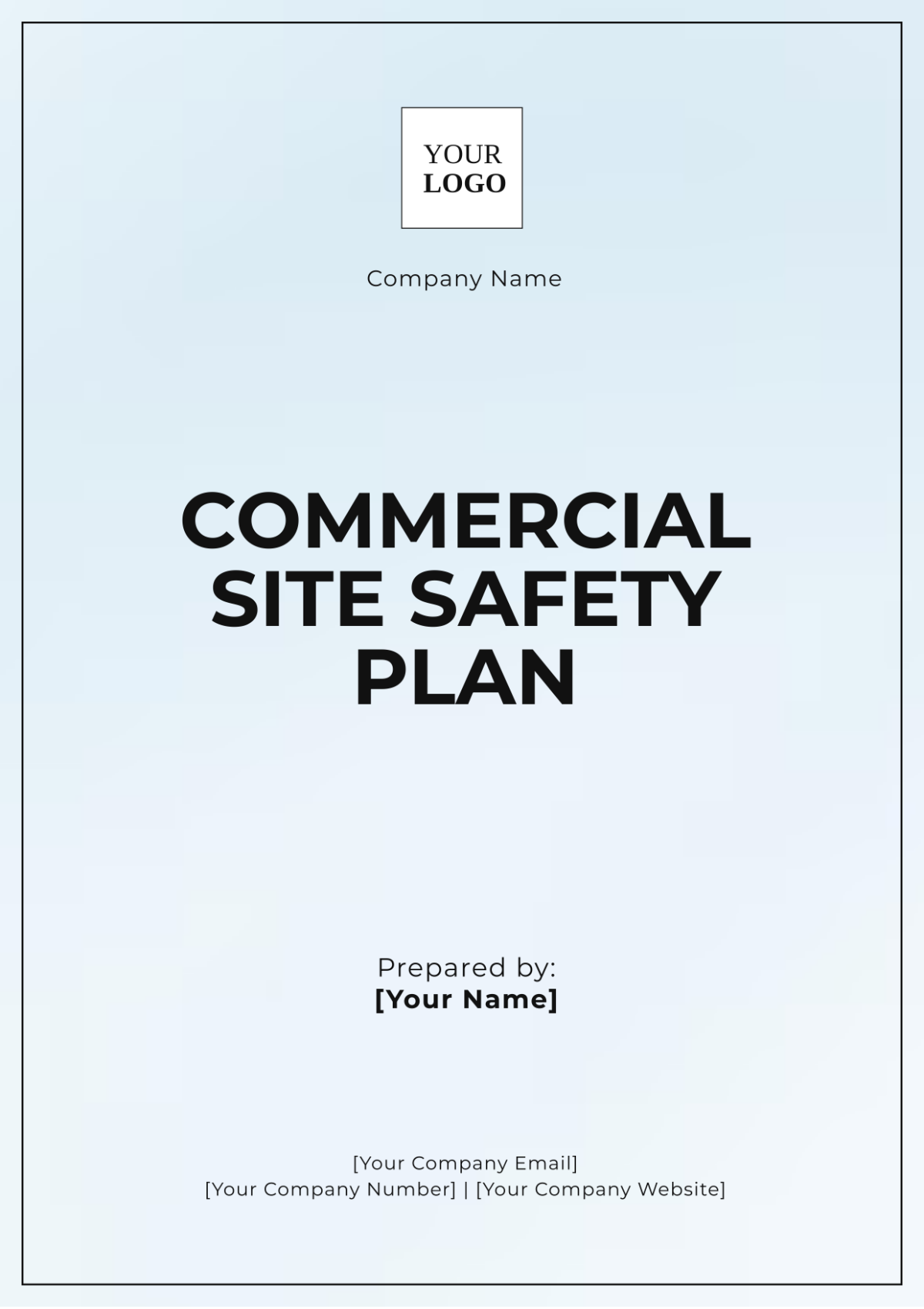Hotel Safety Plan
I. Introduction
A. Purpose
At [Your Company Name], we are deeply committed to the safety and well-being of our guests and staff. The purpose of this Hotel Safety Plan is to provide a comprehensive framework that outlines our strategies, procedures, and protocols for managing safety and security within our premises. By establishing clear guidelines and best practices, we aim to create an environment where everyone feels secure and protected.
This plan serves as a roadmap for our efforts to proactively identify and address potential hazards, mitigate risks, and respond effectively to emergencies. By fostering a culture of safety and preparedness, we strive to instill confidence among our guests and staff, reassuring them that their safety is our top priority.
B. Scope
The scope of this Hotel Safety Plan encompasses all facets of safety and security management within [Your Company Name]. It covers a wide range of areas, including emergency preparedness, fire safety, security measures, health and sanitation standards, guest safety protocols, crisis communication strategies, training and awareness initiatives, maintenance and inspection procedures, as well as compliance with legal requirements and industry standards.
Each aspect of this plan is carefully designed to address specific challenges and scenarios that may arise in a hospitality setting. By taking a holistic approach to safety management, we aim to create a resilient and secure environment that protects the well-being of everyone within our premises.
II. Emergency Preparedness
A. Emergency Response Team
Roles and Responsibilities
The Emergency Response Team plays a critical role in ensuring a swift and coordinated response to emergencies at [Your Company Name]. Each member of the team is carefully selected and trained to fulfill specific roles and responsibilities that contribute to the overall effectiveness of our emergency response efforts.
Emergency Coordinator: Oversees the entire emergency response operation, coordinating the activities of the team and liaising with external emergency services.
First Aid Officer: Provides immediate medical assistance to individuals in need, assessing injuries and administering first aid treatments as necessary.
Evacuation Coordinator: Coordinates the safe evacuation of guests and staff from the premises, ensuring that evacuation routes are clear and assembly points are established.
Communication Officer: Manages communication channels during emergencies, relaying important information to guests and staff, and facilitating communication with external emergency services.
Regular training sessions and drills are conducted to ensure that each team member is proficient in their respective roles and capable of responding effectively under pressure. Additionally, ongoing education and skill development opportunities are provided to enhance the team's capabilities and adaptability to evolving safety threats.
Training and Drills
Training and drills are essential components of our emergency preparedness strategy at [Your Company Name]. These activities are designed to familiarize staff with emergency procedures, reinforce key safety protocols, and assess the effectiveness of our response strategies in simulated scenarios.
Regular Training Sessions: Staff members undergo comprehensive training sessions that cover a wide range of topics, including emergency evacuation procedures, fire safety protocols, first aid techniques, and crisis communication strategies.
Emergency Drills: Scheduled emergency drills are conducted at regular intervals to simulate various emergency scenarios, such as fires, natural disasters, medical emergencies, or security incidents. These drills allow staff to practice their roles and responsibilities in a controlled environment, identify areas for improvement, and refine our emergency response plans accordingly.
III. Fire Safety
A. Fire Detection and Suppression Systems
At [Your Company Name], we prioritize fire safety through the implementation of advanced fire detection and suppression systems. These systems are strategically installed throughout our premises to detect fires early and suppress them effectively, minimizing the risk of property damage and ensuring the safety of our guests and staff.
Our fire detection and suppression systems include:
Smoke Detectors: [Your Company Name] is equipped with smoke detectors in all guest rooms, corridors, and common areas. These detectors are designed to detect the presence of smoke particles in the air, triggering an alarm to alert occupants of a potential fire hazard.
Fire Alarms: In addition to smoke detectors, our premises are equipped with fire alarm systems that are interconnected with the smoke detectors. In the event of a fire, the alarm system activates, emitting a loud audible signal to alert occupants to evacuate the building immediately.
Sprinkler Systems: To suppress fires quickly and prevent their spread, [Your Company Name] is equipped with automatic sprinkler systems installed throughout the building. These sprinklers release water or other fire suppression agents directly onto the flames, effectively extinguishing the fire or containing it until emergency responders arrive.
B. Fire Safety Equipment
Effective fire safety equipment is essential for rapid response and evacuation during a fire emergency. At [Your Company Name], we maintain a comprehensive inventory of fire safety equipment to ensure the safety of our guests and staff, including:
Fire Extinguishers: Portable fire extinguishers are strategically placed throughout our premises, easily accessible in case of a fire emergency. These extinguishers are regularly inspected and maintained to ensure they are fully operational and ready for use at all times.
Emergency Exit Signs: Clear and illuminated emergency exit signs are installed in all corridors and public areas to guide occupants to safety during a fire evacuation. These signs provide essential guidance to guests and staff, ensuring they can evacuate the building quickly and safely.
Fire Hose Reels: In addition to fire extinguishers, [Your Company Name] is equipped with fire hose reels in designated areas. These hose reels provide an additional means of fire suppression, allowing trained personnel to combat small fires before they escalate.
IV. Security Measures
A. Access Control
Maintaining strict access control measures is essential for ensuring the safety and security of our guests and staff at [Your Company Name]. We implement various access control measures to regulate entry to our premises and prevent unauthorized access, including:
Key Card Access: Access to guest rooms and restricted areas is controlled through the use of electronic key card systems. Each guest receives a unique key card upon check-in, granting them access only to designated areas within the hotel.
Security Personnel: Trained security personnel are stationed at entry points and key areas within our premises to monitor access and respond to security incidents promptly. These personnel undergo rigorous training to identify and address potential security threats effectively.
B. Surveillance Systems
Effective surveillance systems play a crucial role in deterring and detecting security threats at [Your Company Name]. We utilize advanced CCTV (Closed-Circuit Television) camera systems to monitor activity throughout our premises and ensure the safety of our guests and staff, including:
CCTV Cameras: High-resolution CCTV cameras are strategically positioned in public areas, corridors, parking lots, and other key locations to provide comprehensive coverage of our premises. These cameras record video footage 24/7, allowing us to monitor for suspicious activity and investigate security incidents.
Security Monitoring Center: Our surveillance systems are monitored by trained security personnel in a centralized monitoring center. This center is staffed 24/7, ensuring continuous monitoring of live camera feeds and immediate response to any security concerns or incidents.
V. Health and Sanitation
A. Cleaning Protocols
Maintaining high standards of cleanliness and sanitation is essential to ensure the health and well-being of our guests and staff at [Your Company Name]. We adhere to rigorous cleaning protocols and procedures to minimize the risk of illness transmission and provide a safe environment for everyone. Our cleaning protocols include:
Regular Cleaning Schedule: Our cleaning staff follows a comprehensive cleaning schedule that outlines specific tasks to be completed daily, weekly, and monthly. High-touch surfaces, such as doorknobs, handrails, elevator buttons, and countertops, are sanitized multiple times throughout the day using EPA-approved disinfectants.
Disinfection Procedures: In addition to regular cleaning, we have implemented enhanced disinfection procedures to target areas with a higher risk of contamination. Electrostatic sprayers are used to apply disinfectant solutions evenly, ensuring thorough coverage and effective disinfection of surfaces.
B. Food Safety
Food safety is a top priority at [Your Company Name], and we are committed to providing our guests with safe and hygienic dining experiences. Our food safety measures include:
Kitchen Hygiene Practices: Our kitchen staff adhere to strict hygiene practices, including frequent handwashing, wearing gloves and hairnets, and maintaining a clean and sanitized work environment. Food preparation surfaces and equipment are cleaned and sanitized regularly to prevent cross-contamination.
Temperature Control: We monitor and record food temperatures at various stages of production, storage, and service to ensure that perishable foods are stored and handled at safe temperatures. Refrigeration units are regularly inspected to verify proper functioning and prevent the growth of harmful bacteria.
VI. Guest Safety
A. Room Safety Features
Ensuring the safety and security of our guests within their accommodations is a priority at [Your Company Name]. We provide a range of room safety features to enhance guest safety and peace of mind, including:
Secure Locks: All guest rooms are equipped with secure locking systems, including electronic key card access and deadbolt locks, to prevent unauthorized entry and ensure guest privacy.
Safety Instructions: Clear and concise safety instructions are provided in each guest room, outlining emergency procedures, evacuation routes, and contact information for hotel staff. Guests are encouraged to review these instructions upon arrival and familiarize themselves with the safety features available in their room.
B. Guest Services
In addition to room safety features, we offer a variety of guest services designed to enhance safety and convenience during their stay, including:
24-Hour Front Desk Assistance: Our front desk is staffed 24 hours a day, seven days a week, to assist guests with any inquiries, requests, or emergencies they may have. Our knowledgeable staff are available to provide assistance and guidance whenever needed.
Emergency Medical Assistance: In the event of a medical emergency, guests can contact our front desk staff for immediate assistance. We maintain a list of local medical facilities and emergency contact numbers to facilitate prompt medical care if needed.
VII. Crisis Communication
A. Communication Plan
Effective communication is paramount during crisis situations to ensure the safety and well-being of our guests and staff. At [Your Company Name], we have developed a comprehensive communication plan that outlines protocols for disseminating information quickly and efficiently. Our communication plan includes the following components:
Communication Channels: We utilize multiple communication channels to reach guests and staff during emergencies, including:
Public Address (PA) System: Announcement capability throughout the premises to relay important information and instructions.
In-room Communication Devices: Telephones, intercoms, or digital messaging systems in guest rooms for direct communication with hotel staff.
Digital Signage: Display screens located in common areas to provide real-time updates and instructions to guests.
Mobile Alerts: SMS text messages or push notifications sent to guests' mobile devices to provide emergency alerts and instructions.
Emergency Contact Information: Contact information for emergency services, including police, fire department, and medical facilities, is prominently displayed in guest rooms and common areas. Additionally, guests are provided with an emergency contact card upon check-in, which includes contact numbers for hotel staff and instructions for contacting emergency services.
B. Guest Notification
Prompt and clear notification of guests during emergencies is crucial for ensuring their safety and facilitating orderly evacuation. Our guest notification procedures include:
Emergency Alarms: In the event of an emergency, alarms are activated to alert guests to the situation and provide instructions for evacuation. Alarms are accompanied by clear audio messages directing guests to evacuate the building using designated exit routes.
Staff Assistance: Hotel staff are trained to provide assistance to guests during emergencies, including guiding them to evacuation routes, providing directions to assembly points, and offering support to guests with special needs or mobility impairments.
VIII. Training and Awareness
A. Staff Training
Comprehensive training is provided to all staff members at [Your Company Name] to ensure they are well-prepared to respond effectively to emergencies and prioritize the safety of guests. Our staff training program includes:
Emergency Response Training: Staff members undergo training in emergency response procedures, including evacuation protocols, first aid, fire safety, and crisis communication. Training sessions are conducted regularly to reinforce knowledge and skills.
Role-specific Training: Staff members are trained in specific roles and responsibilities related to emergency response, such as evacuation coordinators, first aid officers, and communication officers. Training is tailored to the individual's role to ensure they are proficient in their duties during emergencies.
B. Guest Awareness Programs
In addition to staff training, [Your Company Name] conducts awareness programs to educate guests about safety and emergency procedures. Our guest awareness programs include:
Welcome Information: Upon check-in, guests receive information packets that include safety guidelines, emergency procedures, and contact information for hotel staff and emergency services.
In-room Materials: Safety information cards are placed in guest rooms, providing instructions on what to do in case of emergencies, including evacuation procedures and emergency contact numbers.
IX. Maintenance and Inspections
A. Regular Inspections
Regular inspections are conducted at [Your Company Name] to assess the condition of facilities, equipment, and safety systems and address any issues promptly. These inspections are vital for maintaining a safe and functional environment for guests and staff. Our inspection procedures include:
Facility Inspections: Trained inspectors conduct regular walkthroughs of the premises to identify any maintenance issues, safety hazards, or areas requiring attention. Inspections cover all areas of the hotel, including guest rooms, common areas, back-of-house facilities, and outdoor spaces.
Equipment Checks: Critical equipment such as fire detection systems, emergency lighting, elevators, and HVAC (Heating, Ventilation, and Air Conditioning) systems are inspected regularly to ensure they are operating correctly and meet safety standards. Any issues or malfunctions are reported and addressed promptly by maintenance personnel.
B. Maintenance Schedule
A structured maintenance schedule is followed at [Your Company Name] to ensure that routine maintenance tasks are performed on time and that equipment and facilities remain in optimal condition. Our maintenance schedule includes:
Preventive Maintenance: Scheduled maintenance tasks, such as equipment lubrication, filter replacements, and system inspections, are performed regularly to prevent breakdowns and prolong the lifespan of equipment. Maintenance schedules are established based on manufacturer recommendations and industry best practices.
Corrective Maintenance: In addition to preventive maintenance, corrective maintenance is performed as needed to address any issues or malfunctions identified during inspections or reported by staff or guests. Maintenance requests are prioritized based on urgency, with critical issues addressed immediately to minimize downtime and maintain safety.
X. Compliance and Regulation
A. Legal Requirements
[Your Company Name] is committed to complying with all applicable laws, regulations, and industry standards related to safety and security in the hospitality industry. We stay abreast of changes in legislation and regulations to ensure our practices remain up-to-date and in compliance with legal requirements. Our compliance efforts include:
Regulatory Compliance Reviews: Regular reviews are conducted to assess our compliance with local, state, and federal regulations governing safety, health, fire, and building codes. Any areas of non-compliance are addressed promptly to ensure adherence to legal requirements.
Documentation and Record-keeping: Comprehensive records are maintained to document our compliance efforts, including inspection reports, maintenance logs, training records, and permits/licenses. These records are regularly reviewed and updated to demonstrate our commitment to compliance and accountability.
B. Industry Standards
In addition to legal requirements, [Your Company Name] adheres to industry standards and best practices to ensure the highest levels of safety and security for our guests and staff. Our commitment to industry standards includes:
Certifications and Accreditation: We seek certifications and accreditations from recognized industry organizations that demonstrate our adherence to industry standards and commitment to excellence in safety and security. These certifications may include ISO (International Organization for Standardization) certifications, safety awards, or industry-specific accreditations.
Industry Guidelines and Protocols: We actively participate in industry associations and forums to stay informed about emerging trends, best practices, and guidelines related to safety and security in the hospitality sector. By aligning with industry standards, we strive to continuously improve our practices and enhance the safety and satisfaction of our guests.
XI. Conclusion
The safety and security of our guests and staff are of utmost importance at [Your Company Name]. Through the implementation of comprehensive safety measures, rigorous maintenance protocols, and adherence to legal requirements and industry standards, we strive to create a secure environment where everyone can feel safe and comfortable.
By investing in state-of-the-art security systems, conducting regular inspections and maintenance, and providing ongoing training and awareness programs, we are committed to mitigating risks and responding effectively to emergencies. Our dedication to safety extends to every aspect of our operations, from fire safety and emergency preparedness to health and sanitation standards.
At [Your Company Name], we recognize that safety is a shared responsibility, and we encourage collaboration among our team members, guests, and partners to uphold the highest standards of safety and security. Together, we can ensure that [Your Company Name] remains a trusted destination where guests can relax and enjoy their stay with peace of mind.
XII. Contact Information
For any inquiries or assistance regarding safety and security at [Your Company Name], please contact:
[Your Name], Safety and Security Manager
Email: [Your Company Email]
Phone: [Your Company Number]
We value your feedback and welcome any suggestions for improving our safety measures and enhancing the guest experience. Thank you for choosing [Your Company Name], where safety is our top priority.
